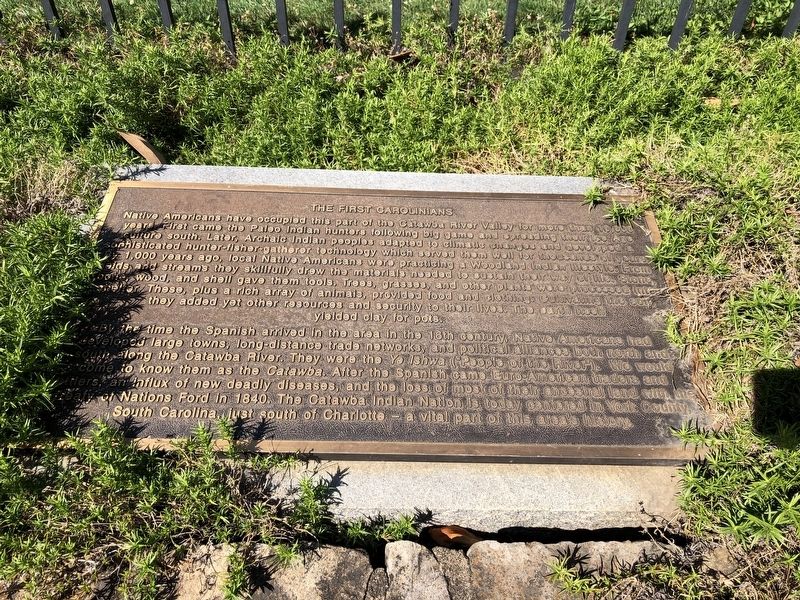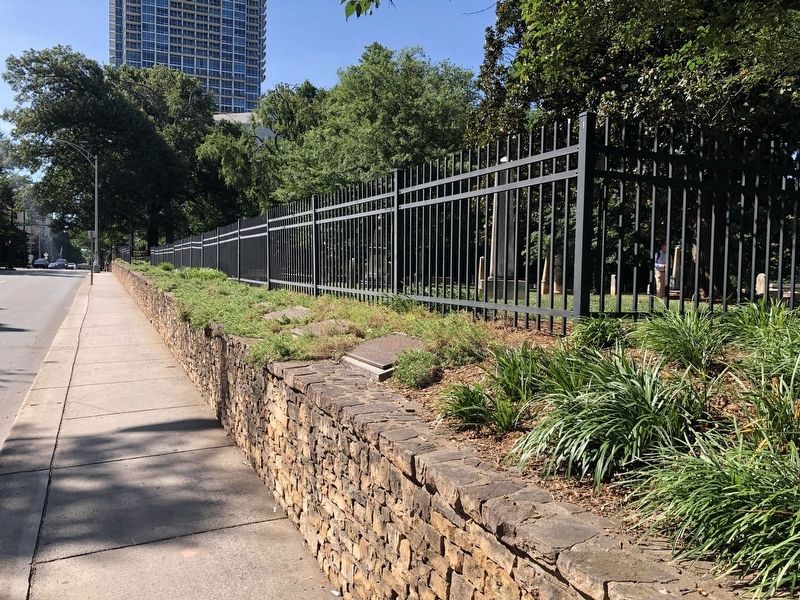Charlotte center city in Mecklenburg County, North Carolina — The American South (South Atlantic)
The First Carolinians
Native Americans have occupied this part of the Catawba River Valley for more than 10,000 years. First came the Paleo Indian hunters following big game and spreading their Ice Age culture south. Later, Archaic Indian peoples adapted to climate changes and developed a sophisticated hunter-fisher-gatherer technology which served them well for thousands of years. By 1,000 years ago, local Native Americans were practicing a Woodland lifestyle. From fields and streams they skillfully drew the materials needed to sustain their way of life. Stone, bone, wood, and shell gave them tools. Trees, grasses and other plants were processed into shelter. These, plus a rich array of animals, provided food and clothing. Cultivating the soil, they added yet other resources and security to their lives. The earth itself yielded clay for parts.
By the time the Spanish arrived in the area in the 16th century, Native Americans had developed large towns, long-distance trade networks, and political alliances both north and south along the Catawba River. They were the Ye Ishwa ("People of the River"). We would come to know them as the Catawba. After the Spanish came European-American traders and settlers, an influx of new deadly diseases, and the loss of most of their ancestral land with the Treaty of Nations Ford in 1840. The Catawba
Indian Nation is today centered in York County, South Carolina, just south of Charlotte — a vital part of this area's history.Topics. This historical marker is listed in these topic lists: Anthropology & Archaeology • Colonial Era • Native Americans • Settlements & Settlers. A significant historical year for this entry is 1840.
Location. 35° 13.757′ N, 80° 50.598′ W. Marker is in Charlotte, North Carolina, in Mecklenburg County. It is in Charlotte center city. Marker is on West 5th Street just west of North Church Street, on the right when traveling west. Touch for map. Marker is at or near this postal address: 200 W Trade St, Charlotte NC 28202, United States of America. Touch for directions.
Other nearby markers. At least 8 other markers are within walking distance of this marker. The Eighteenth Century Piedmont (here, next to this marker); Establishing A New Life (here, next to this marker); The Origin Of Our Names (here, next to this marker); The Mecklenburg Declaration of Independence (here, next to this marker); Captain James Jack's Ride (here, next to this marker); The Battle of Charlotte (here, next to this marker); Hornets' Nest (a few steps from this marker); The Importance Of Religion (a few steps from this marker). Touch for a list and map of all markers in Charlotte.
Credits. This page was last revised on February 3, 2023. It was originally submitted on June 20, 2021, by Devry Becker Jones of Washington, District of Columbia. This page has been viewed 146 times since then and 18 times this year. Photos: 1, 2. submitted on June 20, 2021, by Devry Becker Jones of Washington, District of Columbia.

